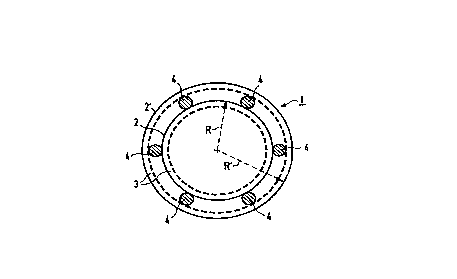Some of the information on this Web page has been provided by external sources. The Government of Canada is not responsible for the accuracy, reliability or currency of the information supplied by external sources. Users wishing to rely upon this information should consult directly with the source of the information. Content provided by external sources is not subject to official languages, privacy and accessibility requirements.
Any discrepancies in the text and image of the Claims and Abstract are due to differing posting times. Text of the Claims and Abstract are posted:
| (12) Patent Application: | (11) CA 2268919 |
|---|---|
| (54) English Title: | AEROSOL FILTER |
| (54) French Title: | FILTRE POUR AEROSOL |
| Status: | Deemed Abandoned and Beyond the Period of Reinstatement - Pending Response to Notice of Disregarded Communication |
| (51) International Patent Classification (IPC): |
|
|---|---|
| (72) Inventors : |
|
| (73) Owners : |
|
| (71) Applicants : |
|
| (74) Agent: | SMART & BIGGAR LP |
| (74) Associate agent: | |
| (45) Issued: | |
| (86) PCT Filing Date: | 1996-10-17 |
| (87) Open to Public Inspection: | 1998-04-30 |
| Examination requested: | 2001-05-03 |
| Availability of licence: | N/A |
| Dedicated to the Public: | N/A |
| (25) Language of filing: | English |
| Patent Cooperation Treaty (PCT): | Yes |
|---|---|
| (86) PCT Filing Number: | PCT/EP1996/004523 |
| (87) International Publication Number: | WO 1998017372 |
| (85) National Entry: | 1999-04-15 |
| (30) Application Priority Data: | None |
|---|
An aerosol filter (1) comprising a plurality of coaxially arranged, basically
cylindrical filtering surfaces (2,2') characterized in that each filtering
surface (2,2') has a metallic tissue (3). The filter is easy to clean and can
be easily re-used due to metallic tissue (3) used for filtering surfaces
(2,2'). In addition, the aerosol filter (1) is particularly resistant to high
and low temperatures and to corrosion.
Filtre pour aérosol (1) comprenant une pluralité de surfaces filtrantes (2, 2') de forme générale cylindrique, disposées coaxialement, caractérisé en ce que chaque surface filtrante (2, 2') présente un tissu métallique (3). Grâce à l'utilisation de ce tissu métallique (3) pour les surfaces filtrantes (2, 2'), le filtre (1) est facile à nettoyer et, par conséquent, facile à réutiliser. En outre, un tel filtre pour aérosol (1) est particulièrement résistant aux hautes températures comme aux basses températures, ainsi qu'à la corrosion.
Note: Claims are shown in the official language in which they were submitted.
Note: Descriptions are shown in the official language in which they were submitted.

2024-08-01:As part of the Next Generation Patents (NGP) transition, the Canadian Patents Database (CPD) now contains a more detailed Event History, which replicates the Event Log of our new back-office solution.
Please note that "Inactive:" events refers to events no longer in use in our new back-office solution.
For a clearer understanding of the status of the application/patent presented on this page, the site Disclaimer , as well as the definitions for Patent , Event History , Maintenance Fee and Payment History should be consulted.
| Description | Date |
|---|---|
| Application Not Reinstated by Deadline | 2003-10-17 |
| Time Limit for Reversal Expired | 2003-10-17 |
| Deemed Abandoned - Failure to Respond to Maintenance Fee Notice | 2002-10-17 |
| Letter Sent | 2002-01-10 |
| Letter Sent | 2001-05-28 |
| Amendment Received - Voluntary Amendment | 2001-05-03 |
| Request for Examination Received | 2001-05-03 |
| All Requirements for Examination Determined Compliant | 2001-05-03 |
| Request for Examination Requirements Determined Compliant | 2001-05-03 |
| Inactive: Cover page published | 1999-06-22 |
| Letter Sent | 1999-05-21 |
| Inactive: First IPC assigned | 1999-05-21 |
| Inactive: Notice - National entry - No RFE | 1999-05-21 |
| Inactive: IPC assigned | 1999-05-21 |
| Application Received - PCT | 1999-05-14 |
| Application Published (Open to Public Inspection) | 1998-04-30 |
| Abandonment Date | Reason | Reinstatement Date |
|---|---|---|
| 2002-10-17 |
The last payment was received on 2001-08-02
Note : If the full payment has not been received on or before the date indicated, a further fee may be required which may be one of the following
Please refer to the CIPO Patent Fees web page to see all current fee amounts.
| Fee Type | Anniversary Year | Due Date | Paid Date |
|---|---|---|---|
| MF (application, 2nd anniv.) - standard | 02 | 1998-10-19 | 1999-04-15 |
| Registration of a document | 1999-04-15 | ||
| Basic national fee - standard | 1999-04-15 | ||
| MF (application, 3rd anniv.) - standard | 03 | 1999-10-18 | 1999-09-15 |
| MF (application, 4th anniv.) - standard | 04 | 2000-10-17 | 2000-09-19 |
| Request for examination - standard | 2001-05-03 | ||
| MF (application, 5th anniv.) - standard | 05 | 2001-10-17 | 2001-08-02 |
| Registration of a document | 2001-11-09 |
Note: Records showing the ownership history in alphabetical order.
| Current Owners on Record |
|---|
| FRAMATOME ANP GMBH |
| Past Owners on Record |
|---|
| JOHANN LISSON |
| KARL-HEINZ KLEINSCHROTH |
| KLAUS BLINN |
| VIKTOR GLIHA |